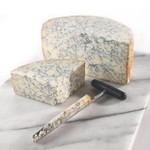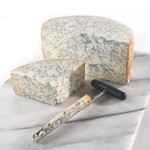‘Doing nothing is not an option’ on cheese composition concerns, Dairy UK

Regulation 42 (2) of the UK Food Labelling Regulations 1996 state that range of cheeses must adhere to fat and moisture content limits.
Specifically, it states that specified product names – for instance, Cheddar, Blue Stilton, Derby, Leicester – should not be used to label or advertise any cheese unless:
“The amount of water in the cheese expressed as a percentage of the total weight of the cheese does not exceed the percentage stated in column 2 of Part II of Schedule 8 [of the act].”
In addition, the 1996 law dictates that, “the amount of milk fat in the cheese expressed as a percentage of the dry matter of the cheese is not less than 48 per cent”.
Compositional standards cut
However, the FIR will enter effect from December 13 2014 (replacing national laws within member states) although aspects thereof regarding nutrition labelling (nutrition information provision) will only take effect from December 13, 2016.
A Dairy UK spokesman for the trade body said this morning: “Our concern is that the Food Information Regulation (FIR) will remove all compositional standards for certain cheeses.
“We believe that this cannot be left to chance. The FIR will wipe away all current UK compositional standards, and will risk a loss of integrity where consumers are concerned.”
An industry source told this publication that the regulation also assures cheese producers and retailers that cheeses sold under variety names adhere to minimum compositional standards.
Taking concerns to DEFRA
Dairy UK was looking at available options, the spokesman said, which included pressing for continued UK legislation to resolve its concerns and developing an industry code of practice.
“Doing nothing is not an option,” the spokesman said, and he added that Dairy UK was taking its concerns up with the UK Department for Environment Food & Rural Affairs (DEFRA).
DairyReporter.com understands that Dairy UK’s position is also supported by other interested UK trade bodies concerned with the dairy sector.
Schedule 8 of the UK’s 1996 act provides maximum water percentages for cheese varieties including Cheddar (39 per cent), Blue Stilton (42), Derby (42), Leicester (42), Cheshire (44), Caerphilly (46).
You can access the Food Labelling Regulations 1996 here, as well as the full text of the Food Information Regulation (FIR).
This brings together EU rules on general and nutrition labelling into a single regulation that aims to simplify and consolidate existing laws, and is directly applicable to member states.
A spokeswoman for UK trade body the British Cheese Board (BCB) said that the issue was “on our radar”.
BCB secretary Nigel White told this publication that the trade body fully supported Dairy UK's position, and that UK legislation had been introduced in the 1970s (he believed) to protect well-known cheese varieties from adulteration with too much added water, and ensure sufficient fat, protein, vitamin and mineral levels.
"Without these regulations such cheeses could be made anywhere in the world, and made cheaper. That's our main concern," he said.
DEFRA plans consultation
UK legislation to ensure standards had worked well, White said, but in the case that such standards could not remain, any alternative industry code of practice would necessitate retailer support, to reduce the risk of cut-price competition from foreign producers.
Asked whether it had received Dairy UK's letter, a spokesman for the Department for Environment, Food & Rural Affairs (DEFRA) said: “We’re aware of Dairy UK’s concerns about speciality cheeses and we’ll be listening to everyone’s views on the issue in a public consultation next summer.
“Maintaining standards for consumers is our priority. We’ve got to consider whether existing legislation remains the best approach and if it allows innovation by the industry.”














